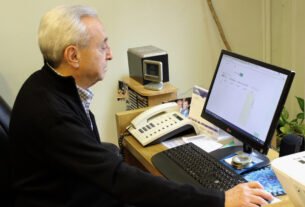The Telemedicine Center at the National University in Colombia is responsible for supporting medical services in remote regions such as the Amazon, providing advice on the medical cases that occur every day in these areas.
To increase safety during this kind of remote diagnostics process, researchers at the Centre have designed a USB device to protect the information sent by doctors over the Internet in order to prevent the doctor’s identity being stolen or the information they send being changed.
The idea of designing and implementing a security tool such as the USB authenticator device, which uses a No-Knowledge algorithm, came from the Centre’s director of telemedicine at the National University, Eduardo Romero.
The device originated as an undergraduate thesis, and was designed to strengthen the computer system, which had previously been unsafe. «»The aim of this USB device is to protect the health information of our patients.»» said Alfredo Beltran Espitia, Development Engineer Telemedicine Center at the National University.
It is a personal device carried by each doctor which cannot be lent out or exchanged, and is also very cheap.
Before the creation of this device, doctors had to enter a password to access a specific site in order to provide a virtual diagnosis to their patients.
«»That system was not particularly safe as password entry is not a reliable security method. Some third party programs remember passwords, making it possible to change the content. The idea of this device is to use the password but to run it through the microcontroller first so that it never needs to be shown to anyone,»» said Alfredo Espitia who along with the electronics engineer Karen Ortega developed the design.
Other uses of the device.
The Telemedicine Center is now seeking to expand the use of this device to other fields related to computer security. «»The first application we thought of would be use with banks and banking, but obviously we can not replace a debit or credit card. We are currently studying replacing the second password used in Internet transactions with the device, as it can provide greater security and confidence.»» concluded the expert.

